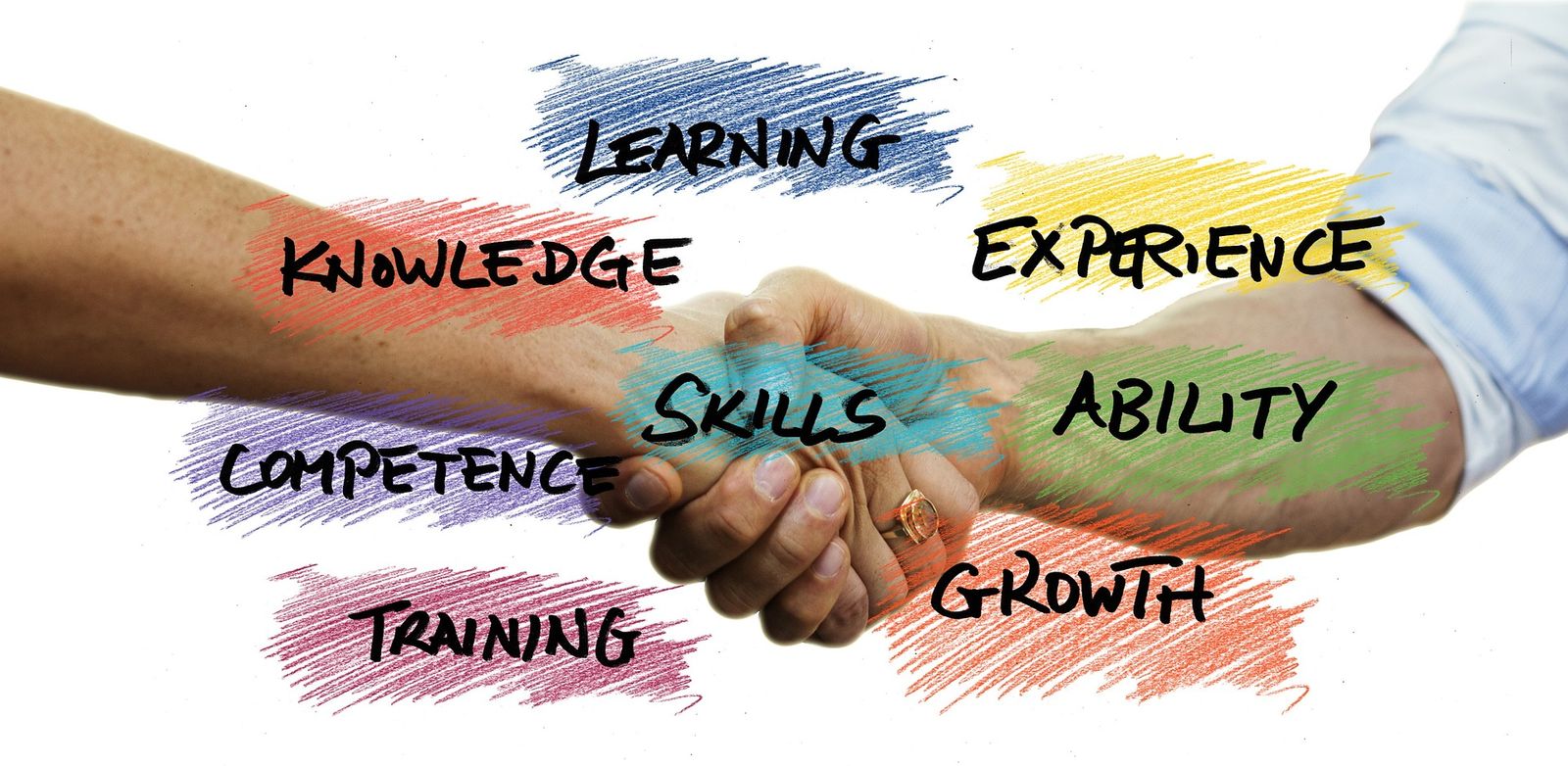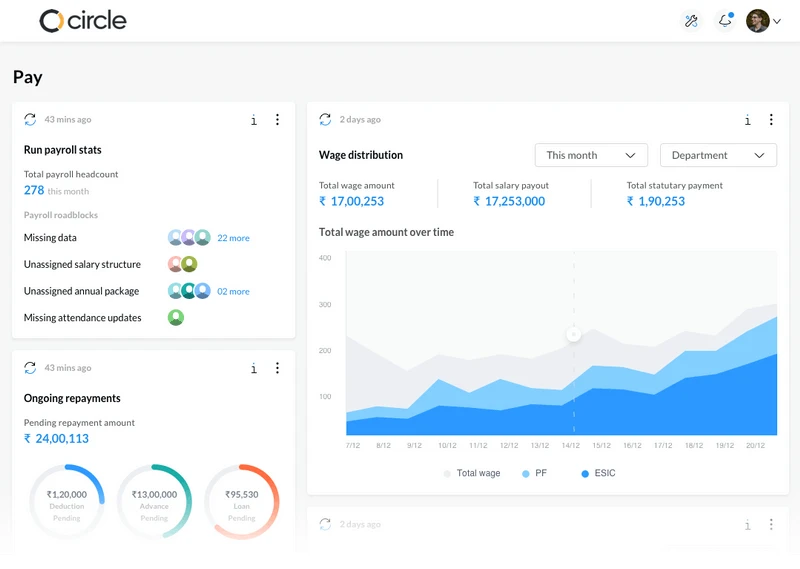The uncertain times of the COVID-19 pandemic have shaken every sector of the world and have become one of the biggest human tragedies. No life has been left unaffected by the disruption that the pandemic brought to our life.
The ongoing pandemic changed the dynamic and relationship between the professional and private life of the employees and had a massive impact on employee life.
With the mass introduction of work-from-home culture, the employees had to deal with change in their work environment and had to learn to maintain a clear distinction between their private and professional life, a balance between realism.
And the employers had to change their business strategy to survive in the economy.
Any effect on the employees directly affects the organization that houses them. After all, employees from the bones of the company. With the change in the work environment and dynamic, the strategy followed by the HR department has also shifted.
In the pre-COVID world, a better work experience meant a better office campus, safer environment, full-fledged training system, etc. Now, with most of the workforce working remote working, the employee experience platform has to be modified accordingly.
With the second surge of the COVID-19 crisis upon us, it has become all the more essential for managers to revise their strategies for providing a better employee experience management.
The current crisis situation is the time to take action and ensure that when the life aspects of employees are already disrupted with the pandemic, how HR can take care of remote and non-remote workers.
What are the changes that have occurred in the life of employees post-pandemic?
Before the period of crisis, most workers had created a boundary between their home and office hours. Once the work hours ended, they could invest their time in personal activity to uplift their mood and maintain a healthy balance.
However, the pandemic has forced workforce transitions and thus, a broader workforce has to work from home. One might say that even before the COVID-19 crisis, there were remote workers who managed to work from homes without any disruption.
There are various differences in both these scenarios. These are detailed below.
- No childcare: With schools, childcare facilities, and external help shut down or unavailable, the responsibility of providing a sense of normalcy to the children has befallen on parents.
They have to provide extra meals, sources of entertainment to keep the children engaged, home-school them, and etc. Remote-working mothers have to ensure that their children attend the online classes that run through the morning and well into the afternoon.
The brunt of the responsibilities is especially hard on single parents, especially remote-working women with no aid. They not only have to ensure that they take care of the children 24/7 without any help, but also provide enough hours to their work to make sure that their position remains intact.
- No boundary between personal and professional life: Sharing the space where one spends their off time and where they work has blurred the lines between work and personal life and with that, disturbed the life balance. The concept of relaxing or unwinding during breaks has lost its meaning and effectiveness.
- Limited ways to relieve stress: With limited and imposed lockdown, workers have very few options left through which they can relieve their stress and experience fulfilment in life. Reliable outputs such as physical exercises, time with friends and family, etc., are not available anymore.
- Uncertainty: It is not an avoidable fact that the pandemic has affected the job security of thousands of employees. With work from home culture and changes in the process followed in a company, there has been a stunt in the career development of the employee.
Along with that, many employees had to change jobs or roles just to ensure that they stay employed during tough times.
Such a situation, if prolonged, can cause stress, anxiety, depression, burnout, and other such adverse mental and physical conditions. As a business leader, you need to control the negative impact to enhance the employee experience.
Companies around the world ensured to listen to COVID response centre practical and collective responses of their workers into consideration while modifying their strategy for employee experience.
Providing stability and security became the priority during the earlier phases of the pandemic.
As per a McKinsey survey, it was found that various US-based employees have adapted the culture of working remotely and prefer it to the schedule inflexibility of regular jobs.
They find themselves more engaged in their daily work. Most parents, especially remote-working fathers, found that working from home has been a positive experience for them.
Now that the companies are actively preparing for the return of the workforce back to offices, HR needs to consider the varied views of employees.
A positive employee experience element should include the views of the individual in terms of home lives, skills, virtual talent, personal characteristics, perspective, mindsets, etc.
How can you focus an employee during and post COVID-19 crisis?
It is a human’s natural tendency to search for stability in a part of their life when there is uncertainty in another part. With the pandemic affecting the daily routine of the employees, it is the human capital management that should take potential actions to ensure that they remain motivated to keep contributing to the business continuity.
Before you create a new plan to follow to enhance and upgrade the employee experience strategies and continued relationship building, here are some of the points that you should keep in mind for your HRMS.
These points cover the current situation of the employee that must be addressed by the talent managers to create a better future workplace.
Safety Measures
With coronavirus being a healthcare issue, it becomes highly essential for employers to ensure employee safety against the virus. This is especially necessary for employees that provide essential services and have to be in contact with numerous people day in and out.
Such employees performing non-remote jobs play a critical role in crisis supply-chain recovery. They should be provided with the required gear to ensure that they do not come in contact with the novel virus.
Also, their treatment and recovery in coronavirus should be aided.
Furthermore, the workplaces should give their attention not just to the physical health of the workforce, but also to their mental and psychological well-being.
Providing easy access to the employees so that they can get counselling and a vent for their building anxiety can be a great way to show that you support them.
Various such examples are already present. Johnson and Johnson, a pharmaceutical company, has initiated a telemedicine program.
Under the program, their complete workforce, including remote and nonremote workers, located around the world can get a confidential counselling session from health experts to maintain their mental health.
Create a safe and inclusive environment
Workplace experience is deemed to be successful when it gives way to employee engagement. Develop such a company culture and take such potential actions that the employees can feel that they belong there.
The best way to implement this is through interactive sessions, organic conversations, providing a sense of community, and providing during the emotional disturbance.
How is an inclusive environment essential for employee experience? When employees expectations are overlooked, it is easy to feel disconnected from the workplaces.
The experience can also give rise to frustration and anxiety, affecting the productivity of the employees. It can lead to hindrance in the process and development of the business operations which can be drastic in times of the pandemic.
There should be transparent payroll software as well as modes of communication, longer-term conversations, maintained with the network of teams to avoid such a situation.
Ensure that the employees are well aware of the initiative and stance of the entire workplace along with the path and plan that it is following. When the team structures are more informed, the positive work effectiveness will increase.
It is also essential that the workers are aware of their role in the workplace challenges. Guide them through the process of working remotely and how they can use the employee self-service portal employed by the company.
There should also be some training provided that can help them in effective team building and understand how they can manage their work and private life while working from home.
Ensure collaboration and receive feedback
An agile organization is one in which every opinion matters. Make sure that your remote employees feel that their ideas are appreciated. Use tools, communication technology, and listening techniques through which they can collaborate on a project to bring new ideas to the table.
While implementing new strategies and methods, you will find that not all employees agree with them and have varied experiences. Make sure that you gather feedback from your employees regularly.
The responses to the workplace will work as an insight into the thoughts and perspective of the employees and provide you with the information through which you can make improvements in a positive employee experience.
Which methods can you choose to get employee response?
You can provide them employee surveys that detail their experience while working remotely, their levels of disruption faced, what changes they want to implement, and any other suggestions that they want to put on the table that detail the potential for improvement of the teams and better the employee experience.
The employee feedback will help you get a clear picture of employees along with the issues that they are facing. The information will help you provide a better-integrated culture and key action on compensation to them so that they are engaged in the company and contribute to business continuity.
Enhance the culture of appreciation
The coronavirus times can be an assessment of trust for the future workplace to show that you appreciate the efforts of your workers. You can use various online platforms and team messaging to give a virtual pat on the back of the employees to create a positive culture and workforce effectiveness.
Make sure that you encourage others to recognize each other’s efforts in any way possible and enhance social engagement, strong employee relationships, and peer-recognition sessions.
How can you provide appreciation to them? You can also reward the employee growth that contributed to the business success. Provide them with your meaningful feedback so that they can know that their work is appreciated and recognized.
Such actions take little effort but create an immensely positive environment among the employees. They also demonstrate your efficiency as a leader. Boosting the confidence of the employees with feedback and appreciation can build respect and enhance employee experience.
You can also show your trust and appreciation by providing certain freedom and authority to the employees. Provide them with enough direction and guidance and entrust them with the rest of the process.
Allow them to do their jobs without dictating them at each step. It will showcase your leadership skills as well as your trust in them.
Improvement in Engagement
Changes in the work environment directly affect the productivity level and development of employees. Make sure with better conversation tools that your employees are well-informed of the methods that are to be followed to ensure the smooth working of the company during work from home.
Provide them with the required information regarding the technology that is to be used, the goals and objectives of the company, and how their contribution plays a role in the big picture.
Consistency in communication and working process can ensure that the productivity of the employees is maintained and they are engaged in their work through the process. Make sure that there are no communication barriers that can affect the certainty of the employees and have negative consequences on their work.
You can provide programs that can enhance remote working skills, employee well-being and work effectiveness. They should also understand how to work through an online attendance management system. Lack of training that details how to use the online tools being used by the company can decrease employee confidence.
You can also have a dashboard, performance management system, or employee portal that details employee productivity along with their business goals.
You can also help them cope with psychological and mental issues so that their productivity is not affected. Provide them with a scientific viewpoint through which they can get help to manage their life better and cope with anxiety and pressure.
The situation that is present is not something that HR leaders can control. You cannot curb the spread of coronavirus, nor you can help the employees medically. However, you can ease the situation by decreasing the impact on employees.
Stability, safety, and security have become the fundamental truth for most employers. Only when the employees have a sense of security will they be able to create a connection with their work.
Times of crisis can create a sense of doubt and diffidence. Employees that are already battling through so many mental and social hindrances may fail to perform at work.
Business leaders use various HR software that can provide them aid and training programs that can guide the employee on how to tackle the situation better and work seamlessly remotely. It is an apt time for organizations to enhance plans for employee wellbeing.
The plans and strategies that they implement now will become their image in the long run. Utilizing this time to gain employee motivation can improve the overall impression of the workplace experience, enhance company performance, and boost employee efforts as well.
If you’re looking for an HRMS solution which consists of payroll software, attendance management, 360 performance review and more, head over to sumHR and get your free demo today or start your 7 day free trial.
If you have any questions drop it down in the comment section below.
FREQUENTLY ASKED QUESTIONS (F.A.Q.)
1.Is an employee able to return to work if they were exposed to COVID-19 but didn’t show any symptoms?
According to the data available so far, if an employee is exposed to someone with Covid-19 but they don’t show any symptoms, they should be quarantined for safety precautions.
They might not have the symptoms themselves but they could be a carrier of Covid-9 bacteria and may infect other people they have contact with. This is why a minimum of 14 days of self-quarantine is advised by professionals.
2.Can I be forced to work during the COVID-19 pandemic?
In response to the novel Covid-19 outbreak, many employers have taken an extra mile to keep their employees safe. Social distancing is very crucial to keep this disease to a minimum.
Generally, an employer can require its employees to return to work even in the midst of the pandemic as long as it complies with federal, state, and local law to provide a safe workplace,”
If your employer is asking you to work from home, then you have no option but to work during your office hours.
3. What should I do if I have COVID-19?
You need to stay home and self-isolate even if you have minor symptoms such as cough, headache, mild fever until you recover. Call your health care provider or hotline for advice.
Have someone bring you supplies. Avoid leaving your house for 14 days to maintain social distancing with people around you.
In these unprecedented times, we need to make sure we are safe as well as the people around us.
If you’re looking for an HRMS









